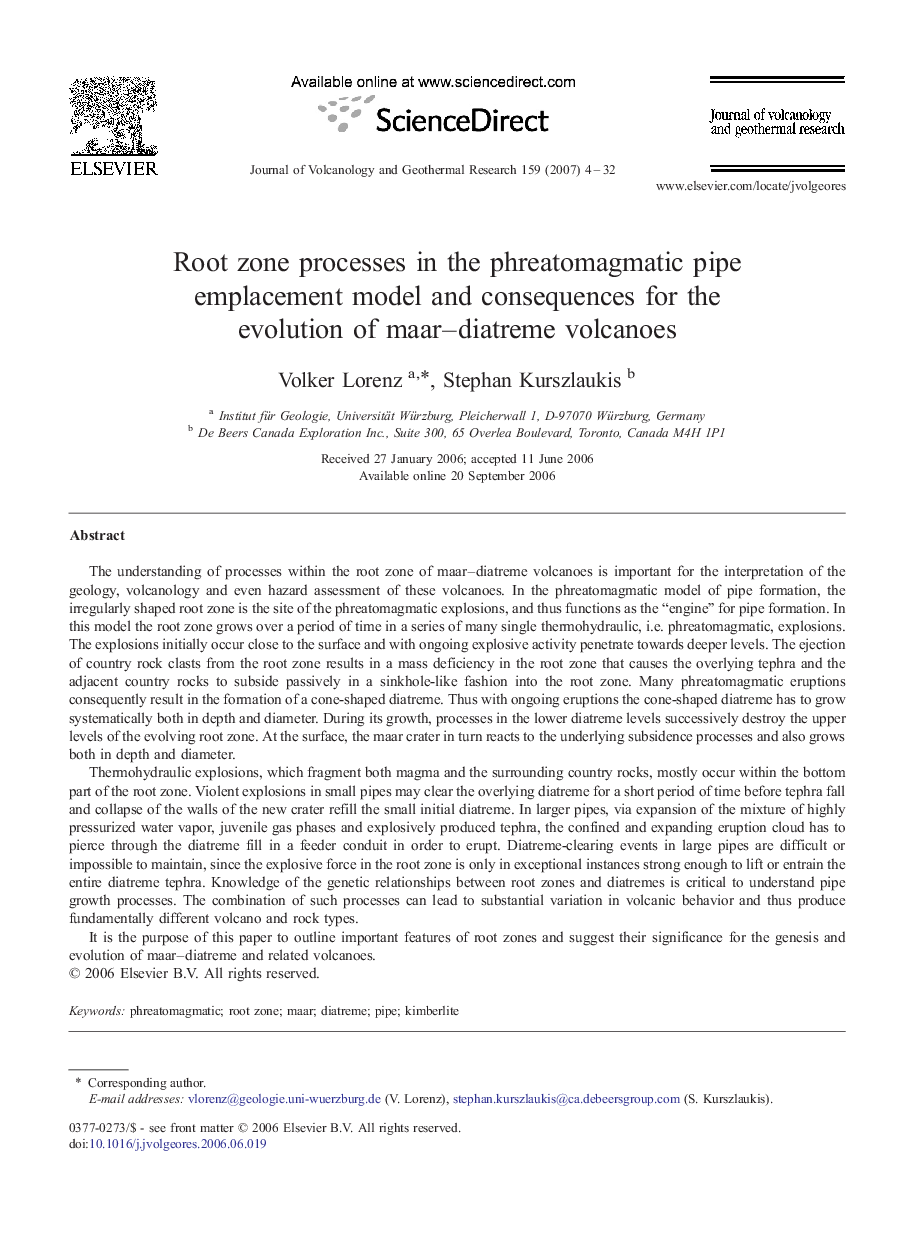| کد مقاله | کد نشریه | سال انتشار | مقاله انگلیسی | نسخه تمام متن |
|---|---|---|---|---|
| 4714106 | 1638469 | 2007 | 29 صفحه PDF | دانلود رایگان |

The understanding of processes within the root zone of maar–diatreme volcanoes is important for the interpretation of the geology, volcanology and even hazard assessment of these volcanoes. In the phreatomagmatic model of pipe formation, the irregularly shaped root zone is the site of the phreatomagmatic explosions, and thus functions as the “engine” for pipe formation. In this model the root zone grows over a period of time in a series of many single thermohydraulic, i.e. phreatomagmatic, explosions. The explosions initially occur close to the surface and with ongoing explosive activity penetrate towards deeper levels. The ejection of country rock clasts from the root zone results in a mass deficiency in the root zone that causes the overlying tephra and the adjacent country rocks to subside passively in a sinkhole-like fashion into the root zone. Many phreatomagmatic eruptions consequently result in the formation of a cone-shaped diatreme. Thus with ongoing eruptions the cone-shaped diatreme has to grow systematically both in depth and diameter. During its growth, processes in the lower diatreme levels successively destroy the upper levels of the evolving root zone. At the surface, the maar crater in turn reacts to the underlying subsidence processes and also grows both in depth and diameter.Thermohydraulic explosions, which fragment both magma and the surrounding country rocks, mostly occur within the bottom part of the root zone. Violent explosions in small pipes may clear the overlying diatreme for a short period of time before tephra fall and collapse of the walls of the new crater refill the small initial diatreme. In larger pipes, via expansion of the mixture of highly pressurized water vapor, juvenile gas phases and explosively produced tephra, the confined and expanding eruption cloud has to pierce through the diatreme fill in a feeder conduit in order to erupt. Diatreme-clearing events in large pipes are difficult or impossible to maintain, since the explosive force in the root zone is only in exceptional instances strong enough to lift or entrain the entire diatreme tephra. Knowledge of the genetic relationships between root zones and diatremes is critical to understand pipe growth processes. The combination of such processes can lead to substantial variation in volcanic behavior and thus produce fundamentally different volcano and rock types.It is the purpose of this paper to outline important features of root zones and suggest their significance for the genesis and evolution of maar–diatreme and related volcanoes.
Journal: Journal of Volcanology and Geothermal Research - Volume 159, Issues 1–3, 1 January 2007, Pages 4–32